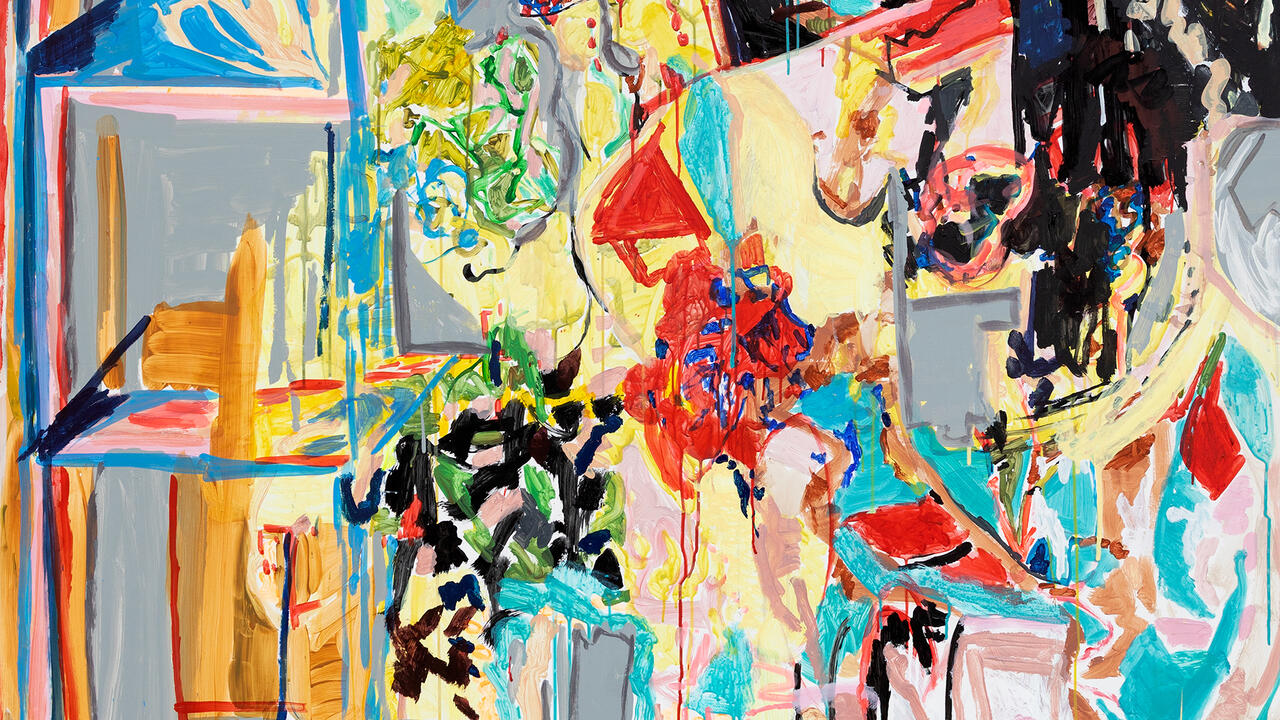Arrival Inside
Mary Mary, Glasgow, UK
Mary Mary, Glasgow, UK

‘A door breaks space in two, splits it, prevents osmosis, imposes a partition. On one side, me and my place, the private, the domestic (a space overfilled with my possessions: my bed, my carpet, my table, my typewriter, my books, my odd copies of the Nouvelle Revue Française); on the other side, other people, the world, the public, politics’, writes Georges Perec in Species of Spaces and Other Pieces (1974). His words have particular resonance with the group exhibition ‘Arrival Inside’ at Mary Mary, a gallery which began in domestic surroundings before opening a more conventional gallery space in 2005. The gallery has retained a sense of privacy and interiority, located on the top floor of a winding staircase in a street near the river Clyde, and representing several artists who make understated, process-orientated works. ‘Arrival Inside’ was the first exhibition curated by the gallery’s director, Hannah Robinson, and reflects her interest in artists who employ ‘a system of remaking and recontextualising which is then left as a trace, a gesture or remnant’.
Thea Djordjadze’s Schâummaché (2007) is a sculpture made from two papier-mâché sculptures resting on cylindrical rubber foam supports painted roughly with shades of pale green and white paint and encircled with coarse salt. Its title is a combination of German and French words meaning ‘chewed up foam’, aptly as one of the objects looks somewhat as if it has a mouth and tongue. Djordjadze’s work avoids overt signposting of influences and techniques, exuding the processes through which it has been formed in a slow and quiet fashion, like an exhaled breath.
In the work of Alexis Marguerite Teplin, there is a sense of influences being literally atrophied within the making process, as in Dribble, Drabble, Babel (2008), a vibrantly patterned Courrèges dress mounted on a rectangular cherrywood frame and stiffened with layers of white oil paint. The Other Side of Paradise (2009) consists of a crumpled edition of the Wall Street Journal, coated in oil on plaster and mounted on a plinth. The date of the newspaper, 2 March 2009, fixes the work to a moment in space and time, when the newspaper was still a source of current information, just as the colours of the dress glimpsed through the white paint point to the garment’s history. Teplin’s work connects with Gaston Bachelard’s remark in The Poetics of Space (1958) that, ‘A fossil is not merely a being that once lived, but one that is still alive, asleep in its form’. Casting is used by two of the other artists in the exhibition, notably Sam Windett, who showed three distinctive bronzes arranged on a plinth, one a slender abstract figure with vaguely Aztec qualities, the other two – a kind of blob and another form like a stylized flaming torch – both rise from bases like ice-cream tubs. While the torch-like form recalls Jasper Johns, the more amorphous shape has a pleasingly puzzling quality; as with Djordjadze and Teplin’s sculptures, there is a sense of the live source material lying asleep within the form.
By way of contrast, Alexandra Bircken presented the spectacular Icarus Survivor (2009), in which the materials seem to have only just relinquished their life. The work has been made from a red padded bodywarmer, mounted on a frame of spray-painted tree branches, with wing-like sleeves constructed from a navy blue jersey top and loosely knitted sections in red and pale grey. The mythological title suggests that these materials could stand up to the rays of the sun more effectively than the wax and feathers employed by the hapless son of Daedalus. There is a practical quality to the work, brass screws are visible, holding the frame together, and the irregular loops of the knitted sleeves. Suspended on wire from the frame are seven casts of cupcakes, in pink coloured plaster, and six plaster casts of peeled bananas in a bluish grey hue. The exuberant, instantly recognisable quality of these forms was a great foil for the unassuming qualities of the other works in the show, such as Owen Gump’s suite of conceptual photographs of manmade landscapes. These muted monochrome images of tyre marks in gravel car parks and scrubland perimeter fencing reflect a privatised version of nature. Another kind of osmosis between intimate and undetermined space occurs in Gerda Scheepers’ ‘Method and Milieu Drawings’ series (2009). Her low-key semi-abstract paintings of interiors reconcile the rational quality of plans with the loose rendering of space found in the work of Matisse. Collectively, the works in the exhibition were suggestive not of partitions but of conduits, infusing the gallery with the intimacy of dreaming sleep.






















